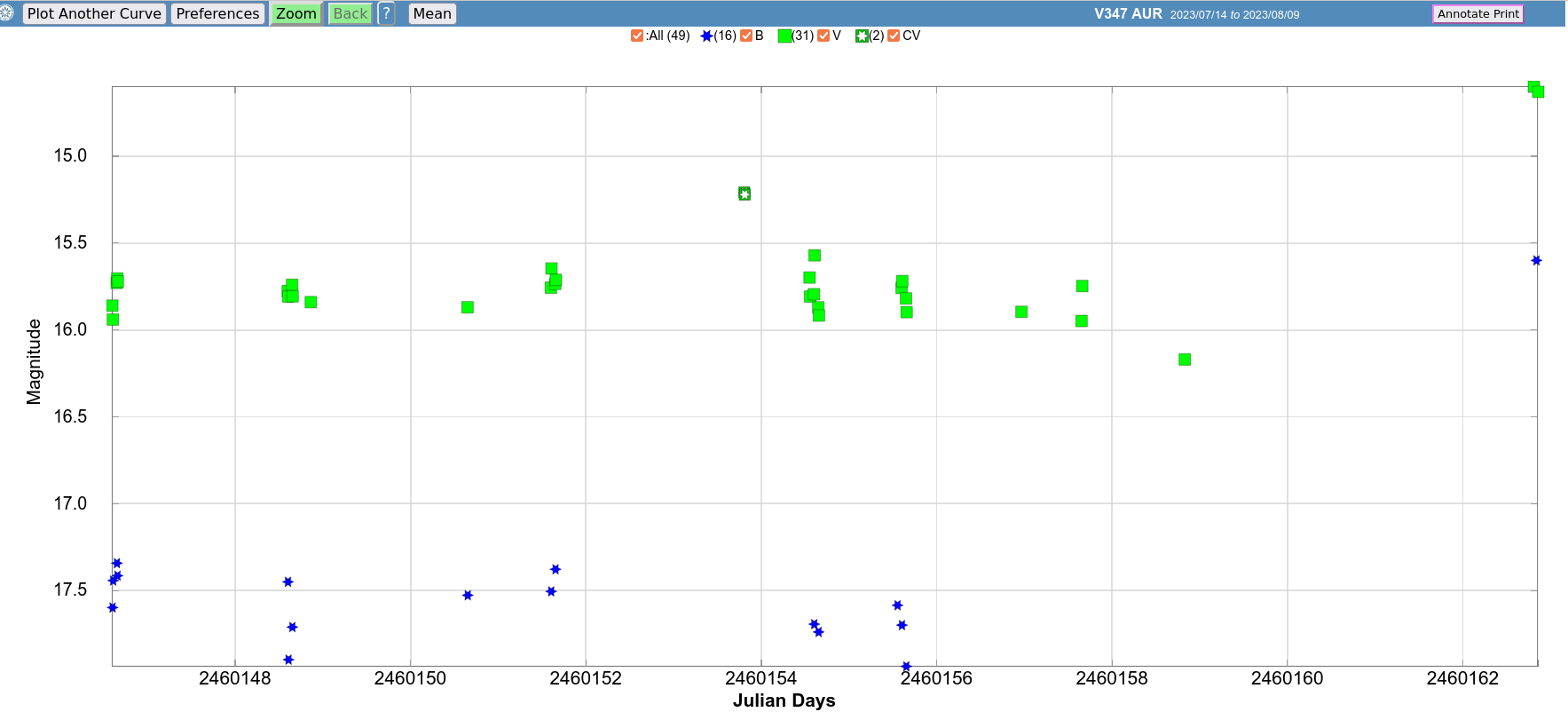
On the night of Aug 05/06, 2023, under fair conditions, I acquired images of V347 Aur as part of our optical monitoring program. All data was taken with the 12-inch telescope and ASI camera. The results were decent.
V347 Aur has brightened by over one magnitude in V-band. The outburst has begun (I think)!
V347 Aur is a young stellar object (YSO) which undergoes semi-periodic outbursts. I'm part of a team of astronomers who have applied for (and received) time on the XMM-Newton X-ray telescope to study this object in the fall of 2023. We have organized an observing campaign with the AAVSO to monitor the object in the optical in order to determine when the outburst begins -- if it begins! Our prediction is some time in mid-August, 2023.
These observations involved:
Notes from the night:
The position of the variable star is
RA = 04:56:57.02 Dec = +51:30:50.9
At quiesence, it has magnitude V = 16-ish, but can rise to V = 12 in an outburst.
Here's a chart from the DSS2 Red plates, 0.6 degrees on a side.

The picture below, based on a stack of images taken on UT Jul 23, 2023, shows the area in the red box above. The variable is at its quiescent level in this image.

I've marked the location of several comparison stars.
star AAVSO ID B V ------------------------------------------------------ B 140 15.134 14.001 C 127 13.617 12.660 D 154 17.491 15.361 --------------------------------------------------------------------------
Here's a picture of the guider TV when pointed at the field (pointed slightly to the left of the variable, actually).

In this run, I took two series of 50 images each in V-band, with a single set of 50 images in B-band between them. I stacked the images in each set to yield two deep V-band and one deep B-band image.
I measured the following values, using the star "D" as the comparison in both B and V -- even though it is _very_ faint in B-band. The difference between using star "D" and the two brighter stars "C" and "D" for calibration is about 0.1 mag in V-band, but about 0.35 mag in B-band. Yikes.
I reported the following to AAVSO:
JD filter mag
---------------------------------------------------
2460162.81 V 14.60 +/- 0.11
2460162.84 B 15.6 +/- 0.4
2460162.86 V 14.63 +/- 0.08
---------------------------------------------------
The variable is brighter now! Compare the appearance of the field: tonight (UT Aug 06) on left, Wednesday night (UT Aug 02) on right.

Here's the current AAVSO light curve:
